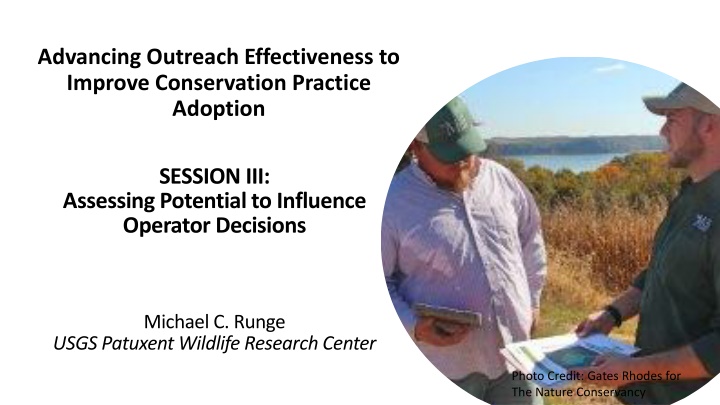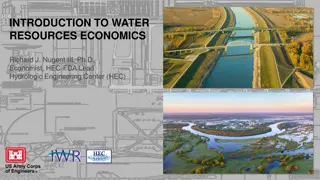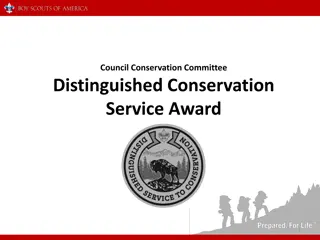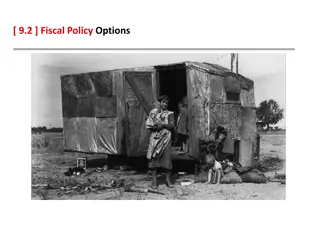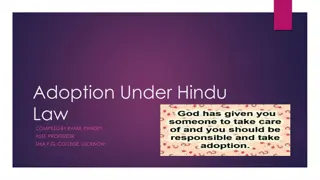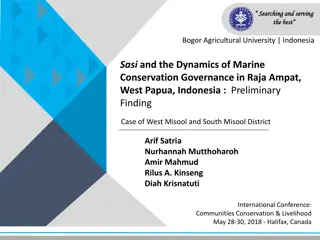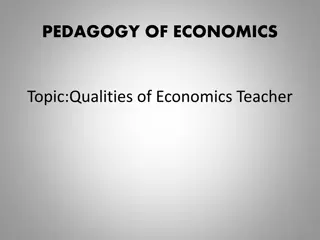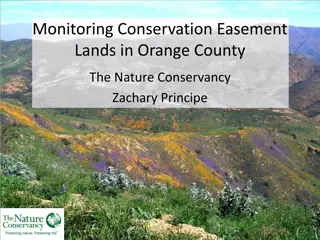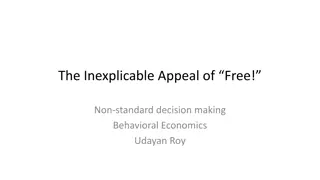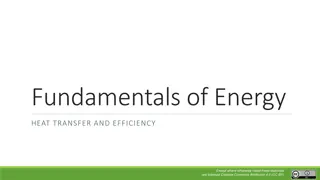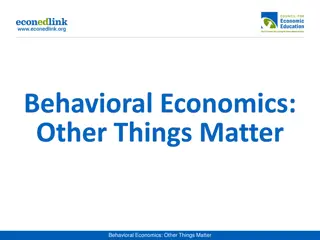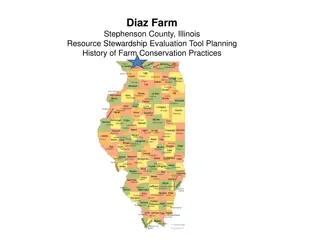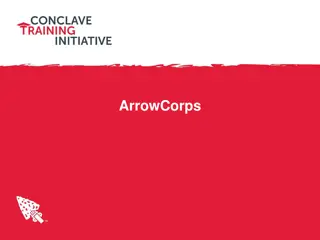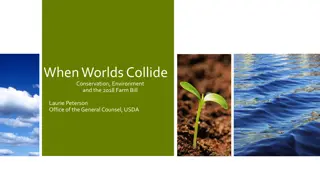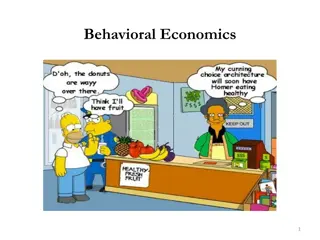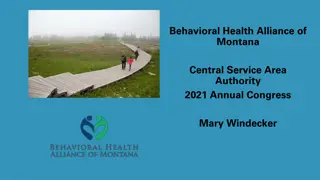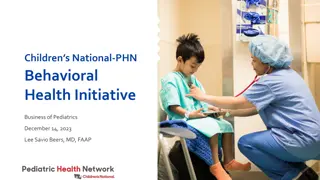Enhancing Conservation Practice Adoption Through Decision Science and Behavioral Economics
Explore how decision science, descriptive and prescriptive decision theory, and behavioral economics play essential roles in influencing operator decisions for adopting conservation practices. The session delves into problem framing, action implementation, alternative development, consequence evaluation, and predicting response outcomes for maximizing conservation practice adoption. Gain insights into practice characteristics, behavioral factors, and practical strategies that can enhance conservation outcomes.
Download Presentation

Please find below an Image/Link to download the presentation.
The content on the website is provided AS IS for your information and personal use only. It may not be sold, licensed, or shared on other websites without obtaining consent from the author.If you encounter any issues during the download, it is possible that the publisher has removed the file from their server.
You are allowed to download the files provided on this website for personal or commercial use, subject to the condition that they are used lawfully. All files are the property of their respective owners.
The content on the website is provided AS IS for your information and personal use only. It may not be sold, licensed, or shared on other websites without obtaining consent from the author.
E N D
Presentation Transcript
Advancing Outreach Effectiveness to Improve Conservation Practice Adoption SESSION III: Assessing Potential to Influence Operator Decisions Michael C. Runge USGS Patuxent Wildlife Research Center Photo Credit: Gates Rhodes for The Nature Conservancy
Decision Science Descriptive Decision Theory How real people do, in fact, make decisions Daniel Kahneman ( Thinking, Fast & Slow ) won the Nobel Prize in Economics in 2002 Deeply embedded in behavioral economics, marketing, other fields Normative & Prescriptive Decision Theory How people could make decisions Presents a framework for making rational decisions Accounts for risk, multiple objectives, time-delays, etc. Deeply embedded in operations research, optimization, industrial processes
The Outreach Practitioner s Decision THE DECISION ANALYST S LENS
There are only so many hours in the day What activities and efforts to undertake to increase adoption of conservation practices? Problem Framing Maximize the number of high- priority acres adopting conservation practices Maximize ecosystem benefits of farm practices Implement Action Elicit Objectives Which mix of practices will produce the best results in a particular landscape and community? Identify Preferred Alternative All the outreach strategies we re going to discuss Develop Alternatives Evaluate Consequences Can we predict the response of operators and owners to the array of potential practices? Source: Runge et al. 2013. Structured decision making. Chapter 5 in Krausman et al.
The Farmers Decision THE BEHAVIORAL ECONOMIST S LENS
Practice Characteristics Relative advantage Complexity Compatability Observability Trialability Risk Attitudes Background Factors: Personal Characteristics Farm Characteristics Farm Context Norms Intention Behavior Persistence Perceived Behavioral Control Source: Linda S. Prokopy, Purdue University Based on: Arbuckle and Roesch-McNally 2015; Fishbein and Ajzen 2010; Reimer et al. 2012; Rogers 2003
Cognitive Strategies Technological/Structural Strategies (intervention points for practitioners italicized/bolded) (intervention points for practitioners italicized/bolded) Norms Knowledge Actual Control (Feasibility)* Intentions/ Willingness Behavior Beliefs Attitudes Values Perceived Control (Feasibility) Source: Robyn S. Wilson, The Ohio State University
Positive or negative evaluations of a behavior, informed by beliefs A Working Framework For understanding and predicting adoption decisions Social influences or constraints Trust Attitudes Trust Norms Generating Commitment (Intention) Implementing the Practice (Behavior) Starting Point Creating Awareness Trust Knowledge Trust Beliefs Trust Constraints Information specific to an opportunity Physical, economic, regulatory, and other barriers to adoption Deep-seated values and worldviews that serve as goals and guide actions
Advancing Outreach Effectiveness to Improve Conservation Practice Adoption Advancing Outreach Effectiveness to Improve Conservation Practice Adoption SESSION III: Assessing Potential to Influence Operator Decisions Trust Trust Attitude Trust Norms TSP TSP Trust Knowledge t0 Awareness Trust Knowledge Adoption TSP Commitment TSP TSP P(Success)? TSP P(Convincing)? Legend: TSP Action Trust Constraints Remember, we can rearrange or redefine components and linkages! Trust Beliefs Decision Factor Outcome
Surveys & Discussion Phase III Aim Grapple with this conceptual framework for adoption Examine its components Consider whether modifications are needed Preparation for Phase IV (later today) The framework is meant to provide us a way to understand the role of individual outreach strategies
